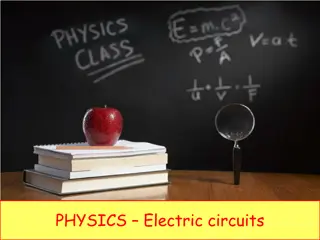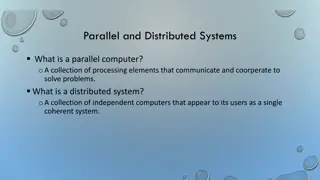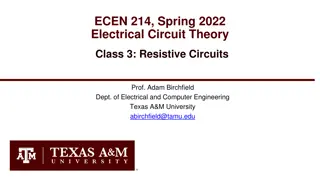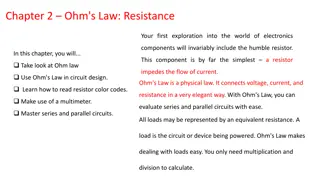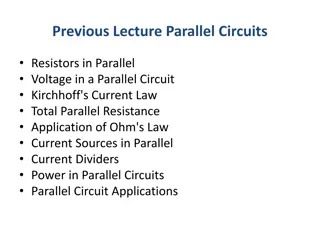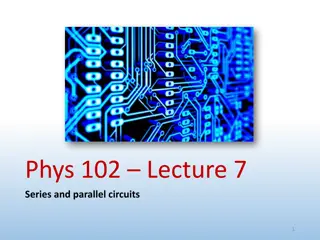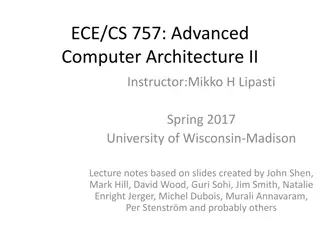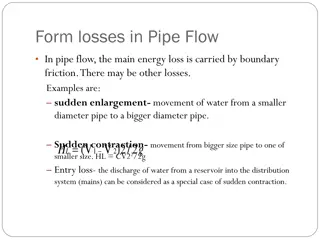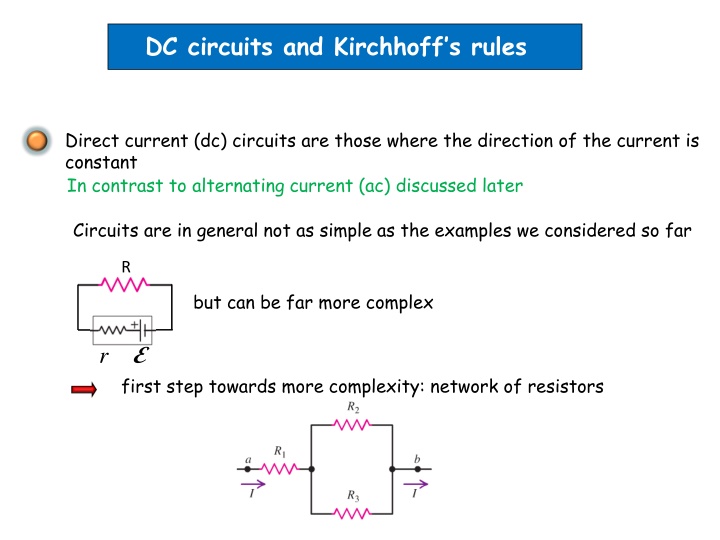
DC Circuits and Kirchhoff's Rules for Resistors
Explore the world of direct current (DC) circuits and Kirchhoff's rules through the analysis of resistors in series and parallel configurations. Learn how to calculate equivalent resistance systematically and understand the behavior of circuits with multiple resistors. Discover the key concepts behind circuit simplification and the implications for practical applications.
Uploaded on | 1 Views
Download Presentation

Please find below an Image/Link to download the presentation.
The content on the website is provided AS IS for your information and personal use only. It may not be sold, licensed, or shared on other websites without obtaining consent from the author. If you encounter any issues during the download, it is possible that the publisher has removed the file from their server.
You are allowed to download the files provided on this website for personal or commercial use, subject to the condition that they are used lawfully. All files are the property of their respective owners.
The content on the website is provided AS IS for your information and personal use only. It may not be sold, licensed, or shared on other websites without obtaining consent from the author.
E N D
Presentation Transcript
DC circuits and Kirchhoffs rules Direct current (dc) circuits are those where the direction of the current is constant In contrast to alternating current (ac) discussed later Circuits are in general not as simple as the examples we considered so far R but can be far more complex E first step towards more complexity: network of resistors r
Resistors in series and parallel For any combination of resistors we can always find a single resistor replacing the combination resulting in the same I and V Vab Req Vab How to find this equivalent resistance systematically Let s start with resistors in series = + + We know: V V V V and I is the same for R1,2,3 ab ax xy yb
= + + = = = With , , V V V V V R I V R I V R I and 1 2 3 ax xy yb ab ax xy yb ( ) = + + = + + = R I R I R I R R R I V R I 1 2 3 1 2 3 ab eq = + + Rq here R R R e 1 2 3 This can be generalized to any number of resistors using Req(n+1)=Req(n)+R(n+1) and Req(1)=R1 into = + + + R ... R R R for resistors in series e 1 2 3 q
Resistors in parallel = V R I ab eq The major step towards a rule for the equivalent resistance for the parallel circuit is to realize: i) Voltages across all R1,2,3 are identical = = = V R I R I R I 1 1 2 2 3 3 ab ii) Current I splits into currents I1,2,3 such that I=I1+I2+I3 1 1 R 1 R 1 R I I I I = = + + = + + 1 2 3 V R V V V ab eq 1 2 3 ab ab ab This again can be generalized to any number of resistors 1 1 R 1 R 1 R = + + + ... for resistors in parallel R 1 2 3 eq
Clicker question To switch off the electric candles decorating the Xmas tree of my friends in good old Germany, they can remove just one candle out of its socket. This lazy trick works because 1) The electric candles are connected in parallel 2) The electric candles are connected in series 3) There is no relation to what we just learned. Light bulbs are no resistors. The trick works because of Santa.


